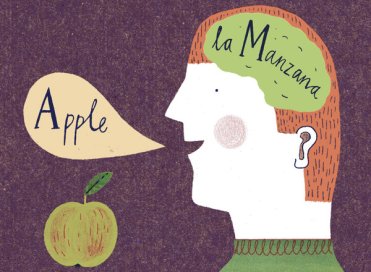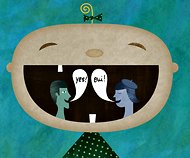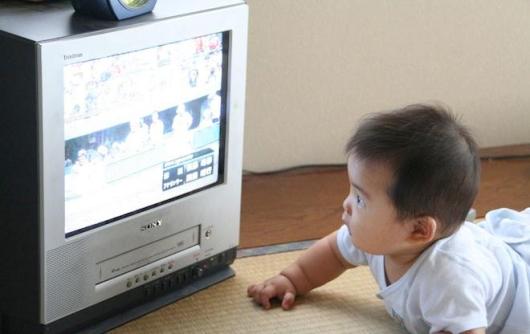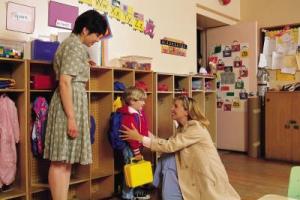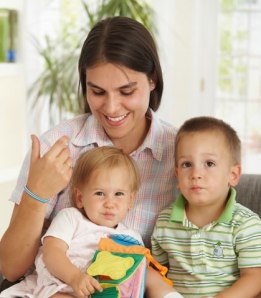
By PAUL TOUGH
Published: September 14, 2011
Dominic Randolph can seem a little out of place at Riverdale Country School — which is odd, because he’s the headmaster. Riverdale is one of New York City’s most prestigious private schools, with a 104-year-old campus that looks down grandly on Van Cortlandt Park from the top of a steep hill in the richest part of the Bronx. On the discussion boards of UrbanBaby.com, worked-up moms from the Upper East Side argue over whether Riverdale sends enough seniors to Harvard, Yale and Princeton to be considered truly “TT” (top-tier, in UrbanBabyese), or whether it is more accurately labeled “2T” (second-tier), but it is, certainly, part of the city’s private-school elite, a place members of the establishment send their kids to learn to be members of the establishment. Tuition starts at $38,500 a year, and that’s for prekindergarten.
Randolph, by contrast, comes across as an iconoclast, a disrupter, even a bit of an eccentric. He dresses for work every day in a black suit with a narrow tie, and the outfit, plus his cool demeanor and sweep of graying hair, makes you wonder, when you first meet him, if he might have played sax in a ska band in the ’80s. (The English accent helps.) He is a big thinker, always chasing new ideas, and a conversation with him can feel like a one-man TED conference, dotted with references to the latest work by behavioral psychologists and management gurus and design theorists. When he became headmaster in 2007, he swapped offices with his secretary, giving her the reclusive inner sanctum where previous headmasters sat and remodeling the small outer reception area into his own open-concept work space, its walls covered with whiteboard paint on which he sketches ideas and slogans. One day when I visited, one wall was bare except for a white sheet of paper. On it was printed a single black question mark.
For the headmaster of an intensely competitive school, Randolph, who is 49, is surprisingly skeptical about many of the basic elements of a contemporary high-stakes American education. He did away with Advanced Placement classes in the high school soon after he arrived at Riverdale; he encourages his teachers to limit the homework they assign; and he says that the standardized tests that Riverdale and other private schools require for admission to kindergarten and to middle school are “a patently unfair system” because they evaluate students almost entirely by I.Q. “This push on tests,” he told me, “is missing out on some serious parts of what it means to be a successful human.”
The most critical missing piece, Randolph explained as we sat in his office last fall, is character — those essential traits of mind and habit that were drilled into him at boarding school in England and that also have deep roots in American history. “Whether it’s the pioneer in the Conestoga wagon or someone coming here in the 1920s from southern Italy, there was this idea in America that if you worked hard and you showed real grit, that you could be successful,” he said. “Strangely, we’ve now forgotten that. People who have an easy time of things, who get 800s on their SAT’s, I worry that those people get feedback that everything they’re doing is great. And I think as a result, we are actually setting them up for long-term failure. When that person suddenly has to face up to a difficult moment, then I think they’re screwed, to be honest. I don’t think they’ve grown the capacities to be able to handle that.”
Randolph has been pondering throughout his 23-year career as an educator the question of whether and how schools should impart good character. It has often felt like a lonely quest, but it has led him in some interesting directions. In the winter of 2005, Randolph read “Learned Optimism,” a book by Martin Seligman, a psychology professor at the University of Pennsylvania who helped establish the Positive Psychology movement. Randolph found the book intriguing, and he arranged a meeting with the author. As it happened, on the morning that Randolph made the trip to Philadelphia, Seligman had scheduled a separate meeting with David Levin, the co-founder of the KIPP network of charter schools and the superintendent of the KIPP schools in New York City. Seligman decided he might as well combine the two meetings, and he invited Christopher Peterson, a psychology professor at the University of Michigan, who was also visiting Penn that day, to join him and Randolph and Levin in his office for a freewheeling discussion of psychology and schooling.
Levin had also spent many years trying to figure out how to provide lessons in character to his students, who were almost all black or Latino and from low-income families. At the first KIPP school, in Houston, he and his co-founder, Michael Feinberg, filled the walls with slogans like “Work Hard” and “Be Nice” and “There Are No Shortcuts,” and they developed a system of rewards and demerits designed to train their students not only in fractions and algebra but also in perseverance and empathy. Like Randolph, Levin went to Seligman’s office expecting to talk about optimism. But Seligman surprised them both by pulling out a new and very different book, which he and Peterson had just finished: “Character Strengths and Virtues: A Handbook and Classification,” a scholarly, 800-page tome that weighed in at three and a half pounds. It was intended, according to the authors, as a “manual of the sanities,” an attempt to inaugurate what they described as a “science of good character.”
It was, in other words, exactly what Randolph and Levin had been looking for, separately, even if neither of them had quite known it. Seligman and Peterson consulted works from Aristotle to Confucius, from the Upanishads to the Torah, from the Boy Scout Handbook to profiles of Pokémon characters, and they settled on 24 character strengths common to all cultures and eras. The list included some we think of as traditional noble traits, like bravery, citizenship, fairness, wisdom and integrity; others that veer into the emotional realm, like love, humor, zest and appreciation of beauty; and still others that are more concerned with day-to-day human interactions: social intelligence (the ability to recognize interpersonal dynamics and adapt quickly to different social situations), kindness, self-regulation, gratitude.
 In most societies, Seligman and Peterson wrote, these strengths were considered to have a moral valence, and in many cases they overlapped with religious laws and strictures. But their true importance did not come from their relationship to any system of ethics or moral laws but from their practical benefit: cultivating these strengths represented a reliable path to “the good life,” a life that was not just happy but also meaningful and fulfilling.
In most societies, Seligman and Peterson wrote, these strengths were considered to have a moral valence, and in many cases they overlapped with religious laws and strictures. But their true importance did not come from their relationship to any system of ethics or moral laws but from their practical benefit: cultivating these strengths represented a reliable path to “the good life,” a life that was not just happy but also meaningful and fulfilling.
Six years after that first meeting, Levin and Randolph are trying to put this conception of character into action in their schools. In the process, they have found themselves wrestling with questions that have long confounded not just educators but anyone trying to nurture a thriving child or simply live a good life. What is good character? Is it really something that can be taught in a formal way, in the classroom, or is it the responsibility of the family, something that is inculcated gradually over years of experience? Which qualities matter most for a child trying to negotiate his way to a successful and autonomous adulthood? And are the answers to those questions the same in Harlem and in Riverdale?
Levin had believed in the importance of character since KIPP’s inception. But on the day of his trip to see Seligman, he was feeling a new urgency about the subject. Six years earlier, in 1999, the first group of students to enter KIPP Academy middle school, which Levin founded and ran in the South Bronx, triumphed on the eighth-grade citywide achievement test, graduating with the highest scores in the Bronx and the fifth-highest in all of New York City. Every morning of middle school they passed a giant sign in the stairwell reminding them of their mission: “Climb the Mountain to College.” And as they left KIPP for high school, they seemed poised to do just that: not only did they have outstanding academic results, but most of them also won admission to highly selective private and Catholic schools, often with full scholarships.
But as Levin told me when we spoke last fall, for many students in that first cohort, things didn’t go as planned. “We thought, O.K., our first class was the fifth-highest-performing class in all of New York City,” Levin said. “We got 90 percent into private and parochial schools. It’s all going to be solved. But it wasn’t.” Almost every member of the cohort did make it through high school, and more than 80 percent of them enrolled in college. But then the mountain grew steeper, and every few weeks, it seemed, Levin got word of another student who decided to drop out. According to a report that KIPP issued last spring, only 33 percent of students who graduated from a KIPP middle school 10 or more years ago have graduated from a four-year college. That rate is considerably better than the 8 percent of children from low-income families who currently complete college nationwide, and it even beats the average national rate of college completion for all income groups, which is 31 percent. But it still falls well short of KIPP’s stated goal: that 75 percent of KIPP alumni will graduate from a four-year college, and 100 percent will be prepared for a stable career.
As Levin watched the progress of those KIPP alumni, he noticed something curious: the students who persisted in college were not necessarily the ones who had excelled academically at KIPP; they were the ones with exceptional character strengths, like optimism and persistence and social intelligence. They were the ones who were able to recover from a bad grade and resolve to do better next time; to bounce back from a fight with their parents; to resist the urge to go out to the movies and stay home and study instead; to persuade professors to give them extra help after class. Those skills weren’t enough on their own to earn students a B.A., Levin knew. But for young people without the benefit of a lot of family resources, without the kind of safety net that their wealthier peers enjoyed, they seemed an indispensable part of making it to graduation day.
What appealed to Levin about the list of character strengths that Seligman and Peterson compiled was that it was presented not as a finger-wagging guilt trip about good values and appropriate behavior but as a recipe for a successful and happy life. He was wary of the idea that KIPP’s aim was to instill in its students “middle-class values,” as though well-off kids had some depth of character that low-income students lacked. “The thing that I think is great about the character-strength approach,” he told me, “is it is fundamentally devoid of value judgment.”
Still, neither Levin nor Dominic Randolph had a clear vision of how to turn an 800-page psychology text into a practical program. After that first meeting in Seligman’s office, Levin and Randolph kept in touch, calling and e-mailing, swapping articles and Web links, and they soon discovered that they shared a lot of ideas and interests, despite the very different school environments in which they worked. They decided to join forces, to try to tackle the mysteries of character together, and they turned for help to Angela Duckworth, who at the time was a graduate student in Seligman’s department (she is now an assistant professor). Duckworth came to Penn in 2002 at the age of 32, after working for a decade as a teacher and a charter-school consultant. When she applied to the Ph.D. program at Penn, she wrote in her application essay that her experiences in schools had given her “a distinctly different view of school reform” than the one she started out with in her 20s. “The problem, I think, is not only the schools but also the students themselves,” she wrote. “Here’s why: learning is hard. True, learning is fun, exhilarating and gratifying — but it is also often daunting, exhausting and sometimes discouraging. . . . To help chronically low-performing but intelligent students, educators and parents must first recognize that character is at least as important as intellect.”
Duckworth’s early research showed that measures of self-control can be a more reliable predictor of students’ grade-point averages than their I.Q.’s. But while self-control seemed to be a critical ingredient in attaining basic success, Duckworth came to feel it wasn’t as relevant when it came to outstanding achievement. People who accomplished great things, she noticed, often combined a passion for a single mission with an unswerving dedication to achieve that mission, whatever the obstacles and however long it might take. She decided she needed to name this quality, and she chose the word “grit.”
 She developed a test to measure grit, which she called the Grit Scale. It is a deceptively simple test, in that it requires you to rate yourself on just 12 questions, from “I finish whatever I begin” to “I often set a goal but later choose to pursue a different one.” It takes about three minutes to complete, and it relies entirely on self-report — and yet when Duckworth took it out into the field, she found it was remarkably predictive of success. At Penn, high grit ratings allowed students with relatively low college-board scores to nonetheless achieve high G.P.A.’s. Duckworth and her collaborators gave their grit test to more than 1,200 freshman cadets as they entered West Point and embarked on the grueling summer training course known as Beast Barracks. The military has developed its own complex evaluation, called the Whole Candidate Score, to judge incoming cadets and predict which of them will survive the demands of West Point; it includes academic grades, a gauge of physical fitness and a Leadership Potential Score. But at the end of Beast Barracks, the more accurate predictor of which cadets persisted and which ones dropped out turned out to be Duckworth’s 12-item grit questionnaire.
She developed a test to measure grit, which she called the Grit Scale. It is a deceptively simple test, in that it requires you to rate yourself on just 12 questions, from “I finish whatever I begin” to “I often set a goal but later choose to pursue a different one.” It takes about three minutes to complete, and it relies entirely on self-report — and yet when Duckworth took it out into the field, she found it was remarkably predictive of success. At Penn, high grit ratings allowed students with relatively low college-board scores to nonetheless achieve high G.P.A.’s. Duckworth and her collaborators gave their grit test to more than 1,200 freshman cadets as they entered West Point and embarked on the grueling summer training course known as Beast Barracks. The military has developed its own complex evaluation, called the Whole Candidate Score, to judge incoming cadets and predict which of them will survive the demands of West Point; it includes academic grades, a gauge of physical fitness and a Leadership Potential Score. But at the end of Beast Barracks, the more accurate predictor of which cadets persisted and which ones dropped out turned out to be Duckworth’s 12-item grit questionnaire.
Levin and Randolph asked Duckworth to use the new methods and tools she was developing to help them investigate the question of character at KIPP and Riverdale, and she and a handful of Penn graduate students began making regular treks from Philadelphia to New York. The first question Duckworth addressed, again, was the relative importance of I.Q. and self-control. She and her team of researchers gave middle-school students at Riverdale and KIPP a variety of psychological and I.Q. tests. They found that at both schools, I.Q. was the better predictor of scores on statewide achievement tests, but measures of self-control were more reliable indicators of report-card grades.
Duckworth’s research convinced Levin and Randolph that they should try to foster self-control and grit in their students. Yet those didn’t seem like the only character strengths that mattered. The full list of 24, on the other hand, felt too unwieldy. So they asked Peterson if he could narrow the list down to a more manageable handful, and he identified a set of strengths that were, according to his research, especially likely to predict life satisfaction and high achievement. After a few small adjustments (Levin and Randolph opted to drop love in favor of curiosity), they settled on a final list: zest, grit, self-control, social intelligence, gratitude, optimism and curiosity.
Over the course of the next year and a half, Duckworth worked with Levin and Randolph to turn the list of seven strengths into a two-page evaluation, a questionnaire that could be completed by teachers or parents, or by students themselves. For each strength, teachers suggested a variety of “indicators,” much like the questions Duckworth asked people to respond to on her grit questionnaire, and she road-tested several dozen of them at Riverdale and KIPP. She eventually settled on the 24 most statistically reliable ones, from “This student is eager to explore new things” (an indicator of curiosity) to “This student believes that effort will improve his or her future” (optimism).
For Levin, the next step was clear. Wouldn’t it be cool, he mused, if each student graduated from school with not only a G.P.A. but also a C.P.A., for character-point average? If you were a college-admissions director or a corporate human-resources manager selecting entry-level employees, wouldn’t you like to know which ones scored highest in grit or optimism or zest? And if you were a parent of a KIPP student, wouldn’t you want to know how your son or daughter stacked up next to the rest of the class in character as well as in reading ability? As soon as he got the final list of indicators from Duckworth and Peterson, Levin started working to turn it into a specific, concise assessment that he could hand out to students and parents at KIPP’s New York City schools twice a year: the first-ever character report card.
Back at Riverdale, though, the idea of a character report card made Randolph nervous. “I have a philosophical issue with quantifying character,” he explained to me one afternoon. “With my school’s specific population, at least, as soon as you set up something like a report card, you’re going to have a bunch of people doing test prep for it. I don’t want to come up with a metric around character that could then be gamed. I would hate it if that’s where we ended up.”
Still, he did think that the inventory Duckworth and Peterson developed could be a useful tool in communicating with students about character. And so he has been taking what one Riverdale teacher described as a “viral approach” to spreading the idea of this new method of assessing character throughout the Riverdale community. He talks about character at parent nights, asks pointed questions in staff meetings, connects like-minded members of his faculty and instructs them to come up with new programs. Last winter, Riverdale students in the fifth and sixth grades took the 24-indicator survey, and their teachers rated them as well. The results were discussed by teachers and administrators, but they weren’t shared with students or parents, and they certainly weren’t labeled a “report card.”
As I spent time at Riverdale last year, it became apparent to me that the debate over character at the school wasn’t just about how best to evaluate and improve students’ character. It went deeper, to the question of what “character” really meant. When Randolph arrived at Riverdale, the school already had in place a character-education program, of a sort. Called CARE, for Children Aware of Riverdale Ethics, the program was adopted in 1989 in the lower school, which at Riverdale means prekindergarten through fifth grade. It is a blueprint for niceness, mandating that students “Treat everyone with respect” and “Be aware of other people’s feelings and find ways to help those whose feelings have been hurt.” Posters in the hallway remind students of the virtues related to CARE (“Practice Good Manners . . . Avoid Gossiping . . . Help Others”). In the lower school, many teachers describe it as a proud and essential part of what makes Riverdale the school that it is.
When I asked Randolph last winter about CARE, he was diplomatic. “I see the character strengths as CARE 2.0,” he explained. “I’d basically like to take all of this new character language and say that we’re in the next generation of CARE.”
In fact, though, the character-strength approach of Seligman and Peterson isn’t an expansion of programs like CARE; if anything, it is a repudiation of them. In 2008, a national organization called the Character Education Partnership published a paper that divided character education into two categories: programs that develop “moral character,” which embodies ethical values like fairness, generosity and integrity; and those that address “performance character,” which includes values like effort, diligence and perseverance. The CARE program falls firmly on the “moral character” side of the divide, while the seven strengths that Randolph and Levin have chosen for their schools lean much more heavily toward performance character: while they do have a moral component, strengths like zest, optimism, social intelligence and curiosity aren’t particularly heroic; they make you think of Steve Jobs or Bill Clinton more than the Rev. Martin Luther King Jr. or Gandhi.
The two teachers Randolph has chosen to oversee the school’s character initiative are K.C. Cohen, the guidance counselor for the middle and upper schools, and Karen Fierst, a learning specialist in the lower school. Cohen is friendly and thoughtful, in her mid-30s, a graduate of Fieldston, the private school just down the road from Riverdale. She is intensely interested in character development, and like Randolph, she is worried about the character of Riverdale students. But she is not yet entirely convinced by the seven character strengths that Riverdale has ostensibly chosen. “When I think of good character, I think: Are you fair? Are you honest in dealings with other people? Are you a cheater?” she told me. “I don’t think so much about: Are you tenacious? Are you a hard worker? I think, Are you a good person?”
Cohen’s vision of character is much closer to “moral character” than “performance character,” and so far, that vision remains the dominant one at Riverdale. When I spent a day at the school in March, sitting in on a variety of classes and meetings, messages about behavior and values permeated the day, but those messages stayed almost entirely in the moral dimension. It was a hectic day at the middle school — it was pajama day, plus there was a morning assembly, and then on top of that, the kids in French class who were going on the two-week trip to Bordeaux for spring break had to leave early in order to make their overnight flight to Paris. The topic for the assembly was heroes, and a half-dozen students stood up in front of their classmates — about 350 kids, in all — and each made a brief presentation about a particular hero he or she had chosen: Ruby Nell Bridges, the African-American girl who was part of the first group to integrate the schools in New Orleans in 1960; Mohamed Bouazizi, the Tunisian fruit vendor whose self-immolation helped spark the recent revolt in that country; the actor and activist Paul Robeson.
In the assembly, in classes and in conversations with different students, I heard a lot of talk about values and ethics, and the values that were emphasized tended to be social values: inclusion, tolerance, diversity. (I heard a lot more about black history at Riverdale than I did at the KIPP schools I visited.) One eighth-grade girl I asked about character said that for her and her friends, the biggest issue was inclusion — who was invited to whose bat mitzvah; who was being shunned on Facebook. Character, as far as I could tell, was being defined at Riverdale mostly in terms of helping other people — or at least not hurting their feelings.
Randolph told me that he had concerns about a character program that comprised only those kind of nice-guy values. “The danger with character is if you just revert to these general terms — respect, honesty, tolerance — it seems really vague,” he said. “If I stand in front of the kids and just say, ‘It’s really important for you to respect each other,’ I think they glaze over. But if you say, ‘Well, actually you need to exhibit self-control,’ or you explain the value of social intelligence — this will help you collaborate more effectively — then it seems a bit more tangible.”
When I spoke to Karen Fierst, the teacher who was overseeing the character project for the Riverdale lower school, she said she was worried that it would be a challenge to convince the students and their parents that there was anything in the 24 character strengths that might actually benefit them. For KIPP kids, she said, the notion that character could help them get through college was a powerful lure, one that would motivate them to take the strengths seriously. For kids at Riverdale, though, there was little doubt that they would graduate from college. “It will just happen,” Fierst explained. “It happened to every generation in their family before them. And so it’s harder to get them to invest in this idea. For KIPP students, learning these strengths is partly about trying to demystify what makes other people successful — kind of like, ‘We’re letting you in on the secret of what successful people are like.’ But kids here already live in a successful community. They’re not depending on their teachers to give them the information on how to be successful.”
At KIPP Infinity middle school, which occupies one floor of a school on West 133rd Street, across from the M.T.A.’s giant Manhattanville bus depot, report-card night last winter fell on a cold Thursday at the beginning of February. Report-card night is always a big deal at KIPP schools — parents are strongly urged to attend, and at Infinity, almost all of them do — but this particular evening carried an extra level of anxiety for both the administrators and the parents, because students were receiving their very first character report cards, and no one knew quite what to expect.
Logistically, the character report card had been a challenge to pull off. Teachers at all four KIPP middle schools in New York City had to grade every one of their students, on a scale of 1 to 5, on every one of the 24 character indicators, and more than a few of them found the process a little daunting. And now that report-card night had arrived, they had an even bigger challenge: explaining to parents just how those precise figures, rounded to the second decimal place, summed up their children’s character. I sat for a while with Mike Witter, a 31-year-old eighth-grade English teacher, as he talked through the character report card with Faith Flemister and her son Juaquin Bennett, a tall, hefty eighth grader in a gray hooded sweatshirt.
“For the past few years we’ve been working on a project to create a clearer picture for parents about the character of your child,” Witter explained to Flemister. “The categories that we ended up putting together represent qualities that have been studied and determined to be indicators of success. They mean you’re more likely to go to college. More likely to find a good job. Even surprising things, like they mean you’re more likely to get married, or more likely to have a family. So we think these are really important.”
Flemister nodded, and Witter began to work his way down the scores on Juaquin’s character report card, starting with the good news: every teacher had scored him as a perfect 5 on “Is polite to adults and peers,” and he did almost as well on “Keeps temper in check.” They were both indicators for interpersonal self-control.
“I can tell this is a real strength for you,” Witter said, turning to Juaquin. “This kind of self-control is something you’ve developed incredibly well. So that makes me think we need to start looking at: What’s something we can target? And the first thing that jumps out at me is this.” Witter pulled out a green felt-tip marker and circled one indicator on Juaquin’s report card. “ ‘Pays attention and resists distraction,’ ” Witter read aloud, an indicator for academic self-control. “That’s a little lower than some of the other numbers. Why do you think that is?”
“I talk too much in class,” Juaquin said, a little sheepishly, looking down at his black sneakers. “I sometimes stare off into space and don’t pay attention.”
The three of them talked over a few strategies to help Juaquin focus more in class, and by the end of the 15-minute conversation, Flemister seemed convinced by the new approach. “The strong points are not a surprise,” she said to Witter as he got up to talk to another family. “That’s just the type of person Juaquin is. But it’s good how you pinpoint what he can do to make things easier on himself. Then maybe his grades will pick up.”
A month later, I returned to KIPP to visit Witter’s classroom. By that point in the school year, character language had permeated Infinity. Kids wore T-shirts with the slogan “Infinite Character” and Seligman’s 24 character strengths listed on the back. The walls were covered with signs that read “Got self-control?” and “I actively participate!” (one indicator for zest). There was a bulletin board in the hallway topped with the words “Character Counts,” where students filled out and posted “Spotted!” cards when they saw a fellow student performing actions that demonstrate character. (Jasmine R. cited William N. for zest: “William was in math class and he raised his hand for every problem.”)
I came to Witter’s class to observe something that Levin was calling “dual-purpose instruction,” the practice of deliberately working explicit talk about character strengths into every lesson. Levin wanted math teachers to use the strengths in word problems; he explained that history teachers could use them to orient a class discussion about Harriet Tubman and the Underground Railroad. And when I arrived in Witter’s class at 7:45 on a Thursday morning in March, he was leading a discussion about Chinua Achebe’s novel “Things Fall Apart.” Above Witter’s head, at the front of the class, the seven character strengths were stenciled in four-inch-high letters, white on blue, from optimism to social intelligence. He asked his students to rank Okonkwo, the protagonist, on his various character strengths. There was a lot of back and forth, but in the end, most students agreed that Okonkwo rated highest on grit and lowest on self-control. Then a student named Yantzee raised his hand. “Can’t a trait backfire at you?” he asked.
“Sure, a trait can backfire,” Witter said. “Too much grit, like Okonkwo, you start to lose your ability to have empathy for other people. If you’re so gritty that you don’t understand why everyone’s complaining about how hard things are, because nothing’s hard for you, because you’re Mr. Grit, then you’re going to have a hard time being kind. Even love — being too loving might make you the kind of person who can get played.” There was a ripple of knowing laughter from the students. “So, yes, character is something you have to be careful about. Character strengths can become character weaknesses.”
Though the seven character strengths aren’t included in every lesson at KIPP, they do make it into most conversations about discipline. One day last winter, I was speaking with Sayuri Stabrowski, a 30-year-old seventh-and-eighth-grade reading teacher at KIPP Infinity, and she mentioned that she caught a girl chewing gum in her class earlier that day. “She denied it,” Stabrowski told me. “She said, ‘No, I’m not, I’m chewing my tongue.’ ” Stabrowski rolled her eyes as she told me the story. “I said, ‘O.K. fine.’ Then later in the class, I saw her chewing again, and I said: ‘You’re chewing gum! I see you.’ She said, ‘No, I’m not, see?’ and she moved the gum over in her mouth in this really obvious way, and we all saw what she was doing. Now, a couple of years ago, I probably would have blown my top and screamed. But this time, I was able to say: ‘Gosh, not only were you chewing gum, which is kind of minor, but you lied to me twice. That’s a real disappointment. What does that say about your character?’ And she was just devastated.”
Stabrowski was worried that the girl, who often struggled with her behavior, might have a mini-meltdown — a “baby attack,” in KIPP jargon — in the middle of the class, but in fact, the girl spit out her gum and sat through the rest of the class and then afterward came up to her teacher with tears in her eyes. “We had a long conversation,” Stabrowski told me. “She said: ‘I’m trying so hard to just grow up. But nothing ever changes!’ And I said: ‘Do you know what does change? You didn’t have a baby attack in front of the other kids, and two weeks ago, you would have.’ ”
To Tom Brunzell, who as the dean of students at KIPP Infinity oversaw the implementation of the character report card, what is going on in character conversations like that one isn’t academic instruction at all, or even discipline; it’s therapy. Specifically, it’s a kind of cognitive behavioral therapy, the very practical, nuts-and-bolts psychological technique that provides the theoretical underpinning for the whole positive psychology field. Cognitive behavioral therapy, or C.B.T., involves using the conscious mind to understand and overcome unconscious fears and self-destructive habits, using techniques like “self-talk” — putting an immediate crisis in perspective by reminding yourself of the larger context. “The kids who succeed at KIPP are the ones who can C.B.T. themselves in the moment,” Brunzell told me. Part of the point of the character initiative, as he saw it, was to give their students the tools to do that. “All kids this age are having mini-implosions every day,” he said. “I mean, it’s middle school, the worst years of their lives. But the kids who make it are the ones who can tell themselves: ‘I can rise above this little situation. I’m O.K. Tomorrow is a new day.’ ”
For Randolph, the experience that Brunzell was describing — the struggle to pull yourself through a crisis, to come to terms on a deep level with your own shortcomings and to labor to overcome them — is exactly what is missing for so many students at academically excellent schools like Riverdale. And perhaps surprisingly, it may turn out to be an area where the students at KIPP have a real advantage over Riverdale kids. On the professional development day in February when I visited Riverdale, Randolph had arranged a screening for his entire faculty of “Race to Nowhere,” a movie about the stresses facing mostly privileged American high-school students that has become an underground hit in many wealthy suburbs, where one-time showings at schools, churches and community centers bring out hundreds of concerned parents. The movie paints a grim portrait of contemporary adolescence, rising in an emotional crescendo to the story of an overachieving teenage girl who committed suicide, apparently because of the ever-increasing pressure to succeed that she felt both at school and at home. At Riverdale, the film seemed to have a powerful effect on many of the staff; one teacher who came up to Randolph afterward had tears in her eyes.
“Race to Nowhere” has helped to coalesce a growing movement of psychologists and educators who argue that the systems and methods now in place to raise and educate well-off kids in the United States are in fact devastating them. One central figure in the movie is Madeline Levine, a psychologist in Marin County who is the author of a best-selling book, “The Price of Privilege: How Parental Pressure and Material Advantage Are Creating a Generation of Disconnected and Unhappy Kids.” In her book, Levine cites studies and surveys to back up her contention that children of affluent parents now exhibit “unexpectedly high rates of emotional problems beginning in junior high school.” This is no accident of demographics, Levine says, but instead is a direct result of the child-raising practices that prevail in well-off American homes; wealthy parents today, she argues, are more likely to be emotionally distant from their children, and at the same time to insist on high levels of achievement, a potentially toxic blend of influences that can create “intense feelings of shame and hopelessness” in affluent children.
Cohen and Fierst told me that they also see many Riverdale parents who, while pushing their children to excel, also inadvertently shield them from exactly the kind of experience that can lead to character growth. As Fierst put it: “Our kids don’t put up with a lot of suffering. They don’t have a threshold for it. They’re protected against it quite a bit. And when they do get uncomfortable, we hear from their parents. We try to talk to parents about having to sort of make it O.K. for there to be challenge, because that’s where learning happens.”
Cohen said that in the middle school, “if a kid is a C student, and their parents think that they’re all-A’s, we do get a lot of pushback: ‘What are you talking about? This is a great paper!’ We have parents calling in and saying, for their kids, ‘Can’t you just give them two more days on this paper?’ Overindulging kids, with the intention of giving them everything and being loving, but at the expense of their character — that’s huge in our population. I think that’s one of the biggest problems we have at Riverdale.”
This is a problem, of course, for all parents, not just affluent ones. It is a central paradox of contemporary parenting, in fact: we have an acute, almost biological impulse to provide for our children, to give them everything they want and need, to protect them from dangers and discomforts both large and small. And yet we all know — on some level, at least — that what kids need more than anything is a little hardship: some challenge, some deprivation that they can overcome, even if just to prove to themselves that they can. As a parent, you struggle with these thorny questions every day, and if you make the right call even half the time, you’re lucky. But it’s one thing to acknowledge this dilemma in the privacy of your own home; it’s quite another to have it addressed in public, at a school where you send your kids at great expense.
And it’s that problem that Randolph is up against as he tries to push forward this new kind of conversation about character at Riverdale. When you work at a public school, whether it’s a charter or a traditional public school, you’re paid by the state, responsible, on some level, to your fellow citizens for the job you do preparing your students to join the adult world. When you work at a private school like Riverdale, though, even one with a long waiting list, you are always conscious that you’re working for the parents who pay the tuition fees. Which makes a campaign like the one that Randolph is trying to embark on all the more complicated. If your premise is that your students are lacking in deep traits like grit and gratitude and self-control, you’re implicitly criticizing the parenting they’ve received — which means you’re implicitly criticizing your employers.
When I asked Randolph to explain just what he thought Riverdale students were missing out on, he told me the story of his own scholastic career. He did well in boarding school and was admitted to Harvard, but when he got to college, he felt lost, out of step with the power-tie careerism of the Reagan ’80s. After two years at Harvard, Randolph left for a year to work in a low-paying manual job, as a carpenter’s helper, trying to find himself. After college, he moved for a couple of years to Italy, where he worked odd jobs and studied opera. It was an uncertain and unsettled time in his life, filled with plenty of failed experiments and setbacks and struggles. Looking back on his life, though, Randolph says that the character strengths that enabled him to achieve the success that he has were not built in his years at Harvard or at the boarding schools he attended; they came out of those years of trial and error, of taking chances and living without a safety net. And it is precisely those kinds of experiences that he worries that his students aren’t having.
“The idea of building grit and building self-control is that you get that through failure,” Randolph explained. “And in most highly academic environments in the United States, no one fails anything.”
Most Riverdale students can see before them a clear path to a certain type of success. They’ll go to college, they’ll graduate, they’ll get well-paying jobs — and if they fall along the way, their families will almost certainly catch them, often well into their 20s or even 30s, if necessary. But despite their many advantages, Randolph isn’t yet convinced that the education they currently receive at Riverdale, or the support they receive at home, will provide them with the skills to negotiate the path toward the deeper success that Seligman and Peterson hold up as the ultimate product of good character: a happy, meaningful, productive life. Randolph wants his students to succeed, of course — it’s just that he believes that in order to do so, they first need to learn how to fail.
Paul Tough (inquiries@paultough.com), a contributing writer, is the author of “Whatever It Takes: Geoffrey Canada’s Quest to Change Harlem and America.” His book “The Success Equation” will be published next year.
Editor: Vera Titunik (v.titunik-MagGroup@nytimes.com)
A version of this article appeared in print on September 18, 2011, on page MM38 of the NYT Sunday Magazine with the headline: The Character Test.
